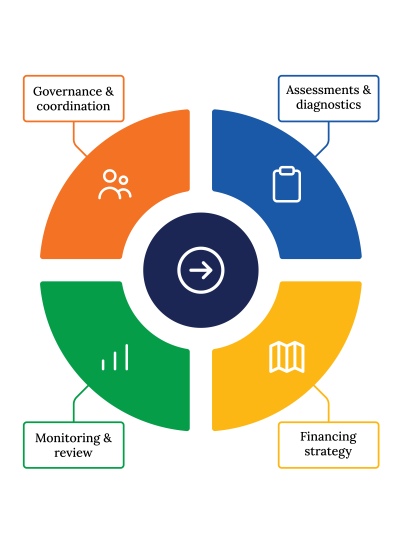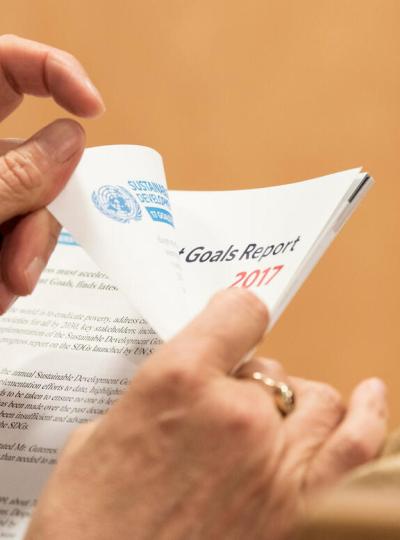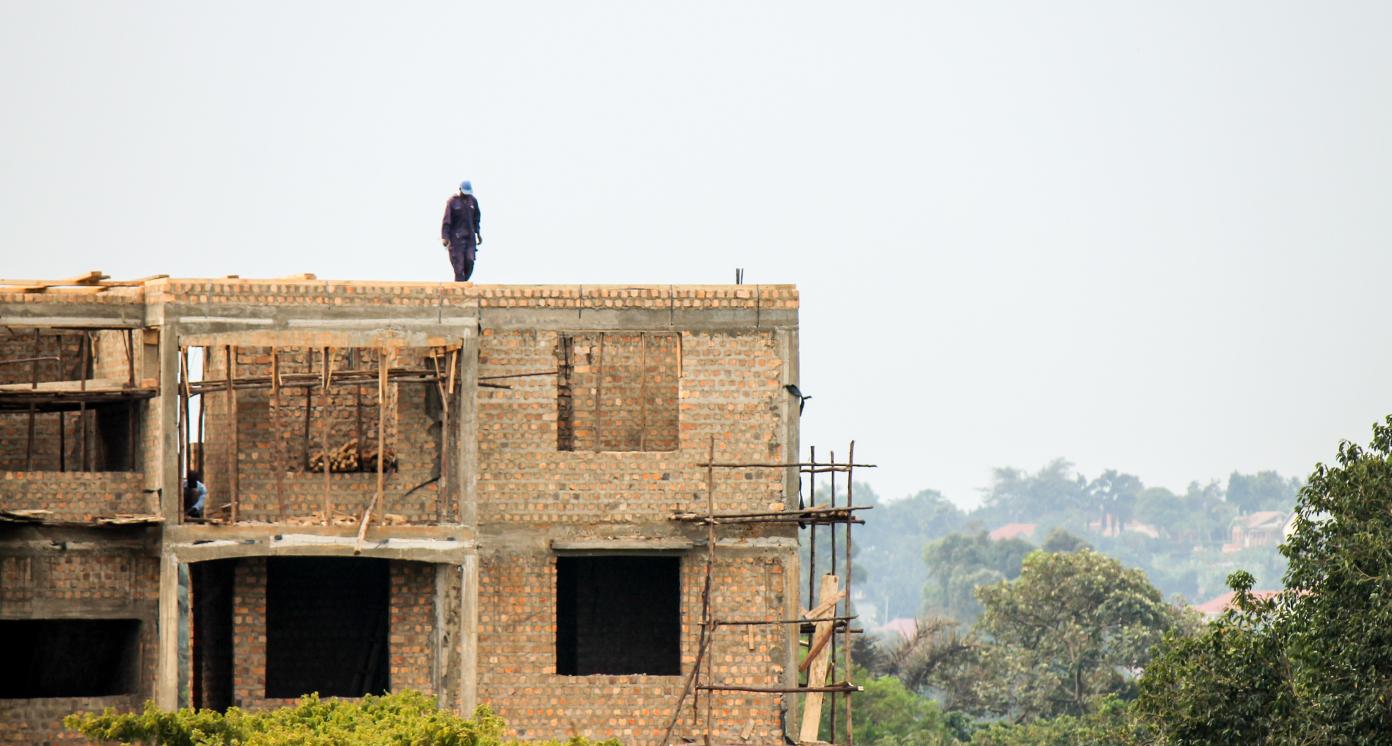Affordable housing
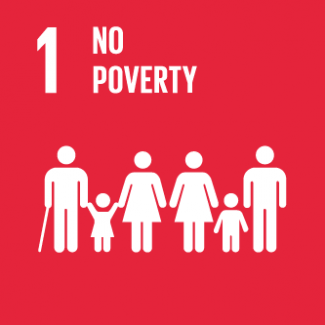
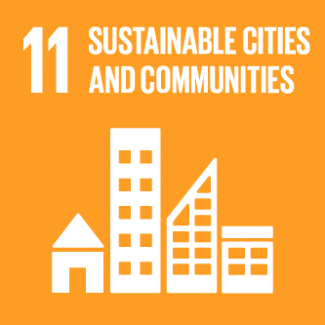
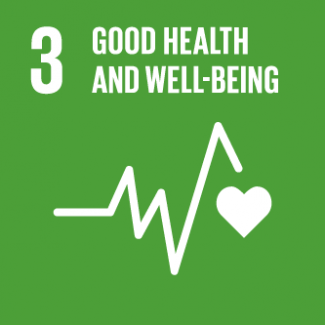
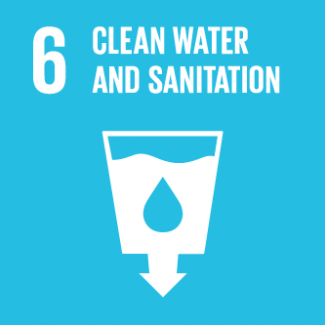
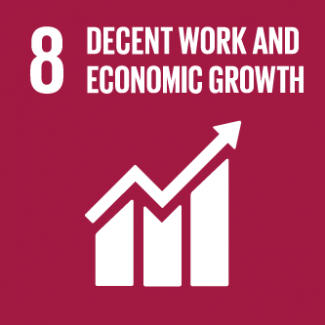
Business Model Description
Upscale affordable housing for low and middle income households in urban and peri-urban areas.
Expected Impact
Offer quality living conditions to low income communities contributing to more equal and sustainable urban planning.
How is this information gathered?
Investment opportunities with potential to contribute to sustainable development are based on country-level SDG Investor Maps.
Disclaimer
UNDP, the Private Finance for the SDGs, and their affiliates (collectively “UNDP”) do not seek or solicit investment for programmes, projects, or opportunities described on this site (collectively “Programmes”) or any other Programmes, and nothing on this page should constitute a solicitation for investment. The actors listed on this site are not partners of UNDP, and their inclusion should not be construed as an endorsement or recommendation by UNDP for any relationship or investment.
The descriptions on this page are provided for informational purposes only. Only companies and enterprises that appear under the case study tab have been validated and vetted through UNDP programmes such as the Growth Stage Impact Ventures (GSIV), Business Call to Action (BCtA), or through other UN agencies. Even then, under no circumstances should their appearance on this website be construed as an endorsement for any relationship or investment. UNDP assumes no liability for investment losses directly or indirectly resulting from recommendations made, implied, or inferred by its research. Likewise, UNDP assumes no claim to investment gains directly or indirectly resulting from trading profits, investment management, or advisory fees obtained by following investment recommendations made, implied, or inferred by its research.
Investment involves risk, and all investments should be made with the supervision of a professional investment manager or advisor. The materials on the website are not an offer to sell or a solicitation of an offer to buy any investment, security, or commodity, nor shall any security be offered or sold to any person, in any jurisdiction in which such offer would be unlawful under the securities laws of such jurisdiction.
Country & Regions
- Uganda: Central
Sector Classification
Infrastructure
Development need
Inadequate infrastructure was one of the 5 key areas ‘problematic to Uganda’s progression’.(II) Accessible and modern infrastructure is crucial for developing other sectors of the economy. Thus the government will strengthen the link between infrastructure development and growth of those sector to attain the synergy effect.(III)
Policy priority
The Third National Development Plan III 2020/21 – 2024/25 prioritizes investment in resilient urbanization with affordable houses and proper waste management as well as transport infrastructure. The aim is to enhance transformation, improve living standards of citizens of Uganda and create workplaces to keep pace with the country's rapid population growth.(III)
Real Estate
Development need
Uganda's urbanization needs more investment to support physical planning and low cost houses with proper services such as waste management and sanitation for middle income earners in urban and peri-urban settlements, and to upgrade informal settlements.(III)
Policy priority
The Strategic Plan 2016-2021 of the Ministry of Finance, Planning and Economic Development recognizes the significant challenge of the housing shortage and rapid population growth.(VI)
Home Builders
Pipeline Opportunity
Affordable housing
Upscale affordable housing for low and middle income households in urban and peri-urban areas.
Business Case
Market Size and Environment
Deficit of 2.4 million housing units in Uganda
Kampala, Uganda's capital, has a population of almost 1.8 million people. Of them, an estimated 60% lives in unplanned and poorly constructed units.(33) Kampala's housing deficit reached approximately 420,000 units in 2018.(33)
To keep pace with Kampala's urban growth, experts project the city's housing stock needs to increase by an additional 29,000 units each year, and that number is likely to further increase due to Uganda's fast population growth and rapid rates of urbanization.(33)
In total, Uganda's housing deficit is 2.4 million housing units (20), with estimates that 900,000 units throughout the country are substandard and need to be replaced or upgraded.(19)
Indicative Return
20% - 25%
Companies active in the sector in Uganda noted a return rate of approximately 20%.(39)
Benchmark examples from Africa report internal rates of return (IRR) between 23% and 26%.(18),(38) A similar business model implemented in Kenya reports an average IRR of 16% -17%.(36)
International Housing Solutions, a private equity investor in Africa, achieved an IRR of 25.2% on constructing affordable housing.(37)
Investment Timeframe
Short Term (0–5 years)
According to a case study from Kenya, the developer of affordable housing is paid after 2 years of delivering the project. In this example, it took 18 months to construct a building with 150 flats.(26)
Depending on the size of the project and the utilised business model, the timeframe may be longer.
Market Risks & Scale Obstacles
Capital - Limited Investor Interest
Market - Highly Regulated
Business - Supply Chain Constraints
Impact Case
Sustainable Development Need
The gap between supply and demand for new housing units widens every year.(35) The acute housing shortage reached 2.4 million units countrywide.(20)
In 2018, 48% of Uganda's urban population lived in informal settlements.(1) Those settlements are characterised by high poverty levels and poor living conditions, as well as substandard housing, overcrowding and insufficient access to public services.(4)
In 2019, Uganda's level of urbanization stood at 24.4%.(6) By 2060, it is forecast to reach as much as 60%.(7) 80% of Kampala's population lives in rented units, with the key constraints to housing ownership being low affordability and high costs of mortgages.(35)
Gender & Marginalisation
The most vulnerable group residing in the informal areas are youth, aged between 15 and 35 years. They are often undereducated and underemployed, as well as victims of violence, which substantially affects human capital development.(5)
Expected Development Outcome
Improved living conditions and quality of life, improved livelihoods of populations living in poverty, ameliorated affordability of housing
Decreased inequalities in access to housing for low and middle income families, reduced growth and expansion of informal areas, increased formal settlements and urban planning development
Reduced communicable and non-communicable diseases connected with living in informal settlements
Gender & Marginalisation
Improved living conditions are expected to positively influence youth and contribute to a productive livelihood situation.
Primary SDGs addressed

1.2.1 Proportion of population living below the national poverty line, by sex and age
1.4.1 Proportion of population living in households with access to basic services

11.1.1 Proportion of urban population living in informal, informal settlements or inadequate housing
11.3.1 Ratio of land consumption rate to population growth rate
Secondary SDGs addressed



Directly impacted stakeholders
People
Gender inequality and/or marginalization
Corporates
Indirectly impacted stakeholders
Planet
Corporates
Public sector
Outcome Risks
There is a risk that a mortgage might be difficult to repay, which will strain the budget for low income families.
Alteration of natural environment in greenfield projects (21)
Waste production due to construction.(21) Contamination of water and increased mud and dust due to construction.(22)
Constructing new housing units, especially state-subsidized, can affect the value of land and buildings in the neighbourhood.(28)
Impact Classification
What
Providing affordable housing is likely to have a positive impact because it improves the living conditions, reduces the prices of houses and limits further expansion of informal settlement areas.
Who
Providing affordable housing is likely to have a positive impact because it improves the living conditions, reduces the prices of houses and limits further expansion of informal settlement areas.
Risk
Similar projects have already been implemented in Uganda and the model has proven effective, although real estate data and environmental risks exist.
Impact Thesis
Offer quality living conditions to low income communities contributing to more equal and sustainable urban planning.
Enabling Environment
Policy Environment
Land Sector Strategy Plan 2013-2023: This plan determines an operational framework for developing land sector reforms imperative to capture and safeguard Uganda’s land tenure system and land users' rights. It also streamlines and modernizes land delivery, and promotes balanced land and natural resources use.(8)
Uganda National Urban Policy: This policy establishes a framework for solving problems related to rapid urbanization. Those include: fast population growth, high levels of urban poverty, poor waste management, high unemployment, ongoing environmental degradation, and poor urban safety and security.(10)
Uganda National Housing Policy: This policy addresses key developmental challenges including: inadequate housing, the housing backlog due to inappropriate construction; and the increasing population. These factors have increased housing demand and contributed to deteriorated housing conditions.(11)
Uganda National Land Policy: This policy describes the current frameworks around land ownership, establishes goals for efficient and sustainable use of land, provides incentives for appropriate and productive use of land, and establishes a new institutional framework for land ownership.(32)
Financial Environment
Financial incentives: Initial allowance and depreciation allowance. Initial allowance – capital deduction of 50% on qualifying plant and machinery. An investor who places depreciable assets in service is eligible for a deduction of 5% on cost of construction straight line method for 20 years.(17)
Fiscal incentives: Double Taxation Agreements (DTA): Investors from countries with active DTAs with Uganda are eligible to withhold tax rates applicable to dividends, interests, management fees and royalties to the amount of 10%, except the United Kingdom, for which the rate is 15%.(17)
Other incentives: The government supports developing affordable housing by placing, emphasizing and/or subsidizing the related infrastructure, such as sewerage, electricity etc.(31)
Regulatory Environment
Although the construction sector is well-regulated and has opportunities for private sector investments, some challenges connected with land tenure remain. However, those are being evaluated by the government and can be expected to be resolved in the near future.(32)
Land Act 1998, Chapter 227 (amended in 2004 and 2010): This Act outlines provisions for the tenure, ownership and management of land, and amends and consolidates the law on tenure, ownership and management of land.(9)
Mortgage Act 2009: This Act provides a framework for creation of mortgages, duties of engaged parties, priority, tacking, consolidation and variation of mortgages, discharge of mortgages and court settlements.(13)
Standard Specifications 2012: These standards regulate architectural, structural and general works, building sanitation and electrical services.(15)
Building Control Regulations Schedules: These schedules specify occupancy classification, design population, parking requirements, load reduction on columns, terrain categories, general classification and design bearing capacities of soil, thickness of non-load bearing walls, etc.(16)
Marketplace Participants
Private Sector
Exim Bank, Mbvoni, National Housing and Construction Company (NHCC), Jomayi Property Consultants, Canaan Sites, Hossana, Heritage Sites, Sema Properties, Zion Construction
Government
Ministry of Lands, Housing and Urban Development, Ministry of Works and Transport, Urban authorities
Multilaterals
African Development Bank (AfDB)
Non-Profit
CDC, KfW, Habitat for Humanity Uganda, Centre for Affordable Housing Finance in Africa (CAHF), US Agency for International Development (USAID), Financial Sector Deepening Uganda (FSDU), Shelter and Human Settlements Alternatives : Ugandan Human Settlements Network (SSA: UHSNET)
Target Locations
Uganda: Central
References
- (I) Sachs, J., Schmidt-Traub, G., Kroll, C., Lafortune, G., Fuller, G., Woelm, F. (2020). The Sustainable Development Goals and COVID-19. Sustainable Development Report 2020. Cambridge: Cambridge University Press. (II) Schwab, K. (2016). The Global Competitiveness Report 2015–2016. http://www3.weforum.org/docs/gcr/2015-2016/Global_Competitiveness_Report_2015-2016.pdf (III) National Planning Authority. National Development Plan III (NDPIII) 2020/21 – 2024/25. (IV) Government of Uganda. Uganda Vision 2040. https://consultations.worldbank.org/sites/default/files/materials/consultation-template/materials/vision20204011.pdf (V) Ministry of Works and Transport. Works and Transport Sector Development Plan (WTSDP) 2015/16 – 2019/20. (VI) Ministry of Finance, Planning and Economic Development. Strategic Plan 2016-2021. https://www.finance.go.ug/sites/default/files/Publications/MOFPED%20STRATEGIC%20PLAN%202016_2021%20printed.pdf
- (1) World Bank database.
- (2) Habitat For Humanity. Uganda - The housing need in Uganda. https://www.habitat.org/where-we-build/uganda
- (3) Kayiira, D. Landscape of housing investments in eastern Africa. http://www.auhf.co.za/wordpress/assets/Day2_08h00_Kayiira_Consultant-Presentation_Eastern-Africa-Investment-Landscape-Presentation.pdf
- (4) United Nations Human Settlements Programme (UN-Habitat) (2012). Uganda National Urban Profile. https://www.worldurbancampaign.org/sites/default/files/uganda_national_urban_profile.pdf
- (5) International Organisation for Migration (2017). Poverty and Unemployment Major Causes of Conflict in Ugandan informals – Study. https://uganda.iom.int/publication/poverty-and-unemployment-major-causes-conflict-ugandan-informals-%E2%80%93-study
- (6) Statista database.
- (7) Davis, K. (2019). Perceptions and Precarity of the Urban Poor in Kampala, Uganda. https://trace.tennessee.edu/cgi/viewcontent.cgi?article=6837&context=utk_gradthes
- (8) Ministry of Lands, Housing and Urban Development. Land Sector Strategy Plan 2013 - 2023. https://mlhud.go.ug/wp-content/uploads/2019/09/LSSP-II.pdf
- (9) Government of Uganda (1998). Land Act 1998, Chapter 227. http://mlhud.go.ug/wp-content/uploads/2019/03/Land-Act-1998-as-amended-CAP-227.pdf
- (10) Ministry of Lands, Housing and Urban Development (2017). Uganda National Urban Policy. https://mlhud.go.ug/wp-content/uploads/2019/07/National-Urban-Policy-2017-printed-copy.pdf
- (11) Ministry of Lands, Housing and Urban Development (2016). Uganda National Housing Policy. https://mlhud.go.ug/wp-content/uploads/2015/10/National-Housing-Policy-May-2016.pdf
- (12) Hashemi, A., Cruickshank, H. and Cheshmehzangi, A. Sustainable low-income housing in Uganda, challenges and opportunities. https://warwick.ac.uk/fac/sci/eng/elith/publications/all_publications/elith-uc10.pdf
- (13) Government of Uganda (2009). Mortgage Act 2009. https://mlhud.go.ug/wp-content/uploads/2019/03/Mortgage-Act2009.pdf
- (14) Ministry of Works and Transport (2006). Building Control Regulations 2006. https://www.architects.ug/national-building-code/
- (15) Ministry of Works and Transport (2012). Standard Specifications 2012. https://www.architects.ug/national-building-code/
- (16) Government of Uganda. Building Control Regulations Schedules. https://www.architects.ug/national-building-code/
- (17) Uganda Revenue Authority (2019). A Guide on Tax Incentives / Exemptions available to the Uganda Investors. https://www.ebiz.go.ug/wp-content/uploads/2020/03/TAX_INCENTIVES_GUIDE_FOR_INVESTORS_IN_UGANDA_October_2019.pdf
- (18) Chilongo, M. (2015). Investment Theme: Access to Housing. https://www.sbs.ox.ac.uk/sites/default/files/2019-01/Impact-theme-Acess-to-Housing.pdf
- (19) Basiime, F. (2020). Uganda facing 2.4 million housing deficit - report. https://www.monitor.co.ug/uganda/news/national/uganda-facing-2-4-million-housing-deficit-report-2457372
- (20) Habitat for Humanity. The housing need in Uganda. https://www.habitat.org/where-we-build/uganda
- (21) Chukwudi, U.S., Christopher, M.C. and Uche, A. (2017). CONSTRUCTION EXTERNALITIES: A THEORETICAL INSIGHTAND THE NIGERIAN SCENARIO. http://www.eajournals.org/wp-content/uploads/Construction-Externalities-A-Theoretical-Insightand-the-Nigerian-Scenario.pdf
- (22) Environmental Pollution Centers. Construction Sites Pollution. https://www.environmentalpollutioncenters.org/construction/
- (23) Downs, A. (2004). Traffic: Why It’s Getting Worse, What Government Can Do. https://www.brookings.edu/research/traffic-why-its-getting-worse-what-government-can-do/
- (24) Ministry of Lands, Housing and Urban Development. About Us. https://mlhud.go.ug/about-us/
- (25) Ministry of Works and Transport. Ministry of Works and Transport. https://www.gou.go.ug/ministry/ministry-works-and-transport
- (26) Shah, S. (2019). Construction financing in Africa’s affordable housing sectors: a critical gap. Testing the assumptions in Kenya’s Affordable Housing Program. Centre for Affordable Housing Finance. http://housingfinanceafrica.org/documents/case-study-16-construction-financing-in-africas-affordable-housing-sectors-testing-the-assumptions-in-kenyas-affordable-housing-program/
- (27) Gholipour, H.F.,Nguyen, J. and Reza Farzanegan, M. (2016). Higher property prices linked to income inequality: study. https://theconversation.com/higher-property-prices-linked-to-income-inequality-study-68664
- (28) Rossi-Hansberg,E. and Sarte, P.D. (2012). Economics of Housing Externalities. https://www.princeton.edu/~erossi/EHE.pdf
- (29) Government of Uganda. Maps and Regions. https://www.gou.go.ug/about-uganda/sector/maps-regions
- (30) Uganda Bureau of Statistics (2016). National Population and Housing Census 2014. Main Report. https://uganda.unfpa.org/sites/default/files/pub-pdf/CENSUS%202014%20Final%20Results_0.pdf
- (31) Centre for Affordable Housing Finance in Africa. Housing Finance in Uganda. http://housingfinanceafrica.org/countries/uganda/
- (32) Ministry of Lands, Housing and Urban Development (2013). The Uganda National Land Policy. http://extwprlegs1.fao.org/docs/pdf/uga163420.pdf
- (33) Haas, A. and Ngoga, T.H. (2018). Where are Kampala’s missing houses? https://www.theigc.org/blog/kampalas-missing-houses/
- (34) Centre for Affordable Housing Finance in Africa (2020) Uganda’s Housing Construction and Housing Rental Activities. http://housingfinanceafrica.org/app/uploads/UGANDA-FINAL-formatted-version-1.pdf
- (35) Kayiira, D. (2019). Uganda. http://housingfinanceafrica.org/app/uploads/V14-Uganda-profile-kf-3.pdf
- (36) Kenya Property Developers Association (2018). Affordable Housing in Kenya - Investment cases for developers building affordable homes in Nairobi. http://housingfinanceafrica.org/app/uploads/Kenya-Affordable-Housing-Investment-Cases6.pdf
- (37) Rust, K. (2016). The Residential Investment Opportunity in Driving Economic Growth. Centre for Affordable Housing Finance in Africa. http://housingfinanceafrica.org/documents/the-residential-investment-opportunity-in-driving-economic-growth/
- (38) Shah, S. (2019). Construction financing in Africa’s affordable housing sectors: a critical gap. Testing the assumptions in Kenya’s Affordable Housing Program. Centre for Affordable Housing Finance. http://housingfinanceafrica.org/documents/case-study-16-construction-financing-in-africas-affordable-housing-sectors-testing-the-assumptions-in-kenyas-affordable-housing-program/
- (39) UNDP/PwC private sector interviews, 2021.












